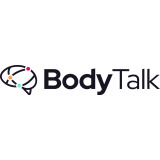This informal CPD article on Four Tips To Structure a Great Business Presentation was provided by UK Body Talk, the global leader in evidence-based courses on the psychology of communication.
When it comes to delivering presentations in the business world, engagement, connection, and memorability are key. You'll want to leave a lasting impression on your audience and provide them with actionable takeaways. Here are four tips for structuring a great business presentation.
Tips for structuring a great business presentation
Credibility Matters - Your audience needs to trust that you are an expert in the field, but your name, your job title, and your qualifications are only part of the equation when it comes to credibility. These are what we call logical credibility and it can only take you so far. To get an audience to trust and engage with you you'll need to share some emotional credibility too. Aristotle called this 'ethos' and it's about finding a common bond. You're saying 'I'm like you' or 'I understand your world'. If an audience trusts you and feels there is a connection they're much more likely to listen to what you have to say.
Use storytelling - Storytelling is a powerful tool. It can make complex concepts relatable and help your audience remember the points you're trying to make. Stories are memorable because they’re easy for us to understand and empathise with – it’s how we communicate with each other in everyday life.
In many stories we often see the characters facing a problem and going on a journey to overcome that problem and find a better future, which is what we do in business; solve problems and work toward goals. So, it makes sense to tell your story in a way that connects with the audience and resonates with them. What are the challenges your audience is facing? How can you help them achieve that brighter future? What will they gain from listening to your presentation? Give strong benefits to entice them in. Perhaps you can give them clarity around a complex message or confidence in a new project. Aristotle called this pathos, influencing through emotion.
Keep it simple - You may have lots of things you want to say, but remember it's not about what you want to say, rather what does the audience need to hear? Strip out the jargon and unnecessary points and where possible, follow the rule of three. What are the three key themes you'll share with the audience? We love things that come in threes, think of all the stories you love which have three things in them - Aladdin, Three Little Pigs, Goldilocks...
Give clear next steps - What do you want the audience to do next? Be specific about the actions that need to be taken and give a timeline too. Ideally, it's a next step rather than the long-term goal - whatever you need to say to keep the conversation and the momentum going. If you feel there's some reluctance, link the next steps to a benefit for the audience.
So, next time you start to write a 17-point agenda slide for your presentation, ditch the complex PowerPoint and lean into storytelling instead.
We hope this article was helpful. For more information from UK Body Talk, please visit their CPD Member Directory page. Alternatively, please visit the CPD Industry Hubs for more CPD articles, courses and events relevant to your Continuing Professional Development requirements.













